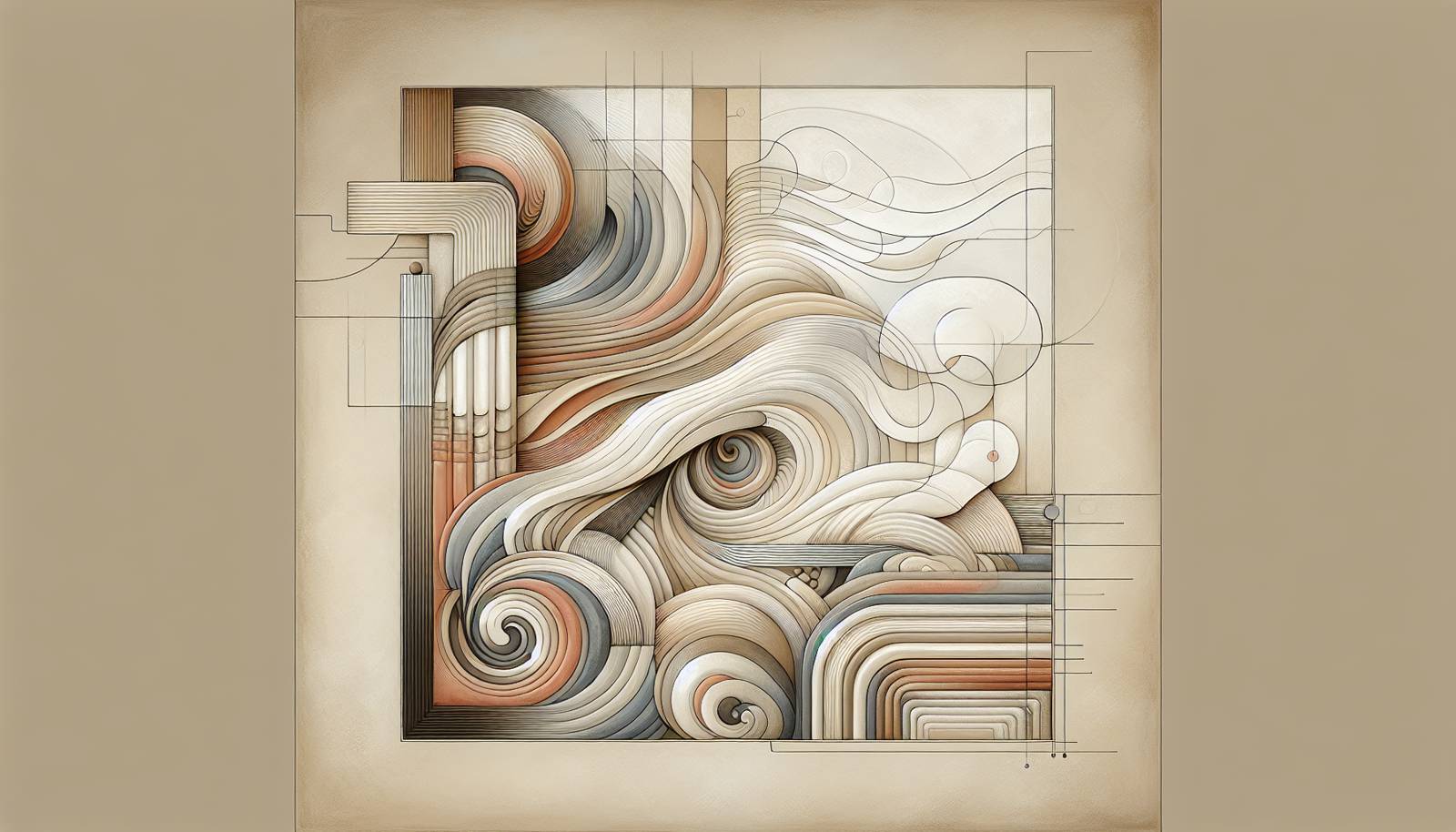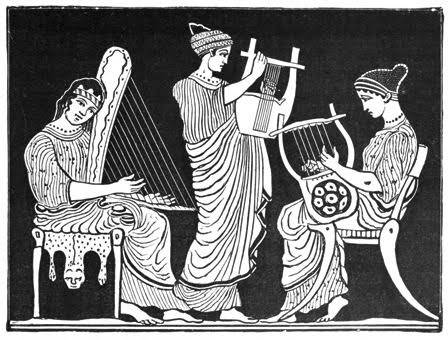
FAQ About Influence of Ancient Greek Philosophy on Western Art

What are the main philosophical ideas from ancient Greece that influenced Western art?
Ancient Greek philosophy introduced several key concepts that influenced Western art, including the pursuit of ideal beauty, harmony, and balance. Philosophers like Plato emphasized the concept of ideal forms, which inspired artists to depict perfect proportions and symmetry in their work. Meanwhile, Aristotle's focus on realism and observation encouraged artists to portray the natural world accurately. These ideas laid the foundation for classical art's emphasis on form and structure.

How did Plato's philosophy shape Western aesthetics in art?
Plato's philosophy greatly impacted Western aesthetics through his theory of ideal forms. Plato believed that all material objects are imperfect copies of their ideal versions that exist in a realm of forms. This led artists in the Western tradition to strive for perfection in their depictions, aiming to represent the ideal form of human beauty and order. This pursuit of idealism is evident in the balanced and harmonious sculptures and architectures from classical antiquity.

What role did Aristotle's views play in the development of Western art?
Aristotle's philosophy contributed significantly to the development of Western art, particularly through his emphasis on realism and observation. Unlike Plato, Aristotle believed that art should imitate life and reflect the natural world accurately. This led to a focus on realistic portrayals and the study of human anatomy, which became central to Western art traditions, especially during the Renaissance. Artists were encouraged to observe the world precisely, capturing its nuances and imperfections.

How did Greek philosophical ideas influence Renaissance art?
The Renaissance marked a revival of Greek philosophical ideas, significantly influencing art. The rediscovery of ancient texts reintroduced Plato's ideal forms and Aristotle's emphasis on realism and empirical observation. This dual influence is evident in Renaissance art's combination of idealized beauty and realistic details. Artists like Leonardo da Vinci exemplified this synthesis through works that feature precise anatomical study alongside symmetrical balance and ideal proportions.

In what ways did Stoicism influence Western art?
Stoicism, a Hellenistic philosophy founded in Greece, emphasized rationality, self-discipline, and virtuous living. In Western art, Stoicism's impact is seen in the portrayal of figures exhibiting calmness, resilience, and moral strength. Many artworks during the Enlightenment drew from Stoic principles, depicting historical and mythological figures as stoic heroes, emphasizing moral virtues over sensory beauty.

How did the concept of ‘mimesis’ influence Western art forms?
The concept of 'mimesis,' which refers to imitation, was foundational in shaping Western art forms. Originating from Greek philosophy, particularly Aristotle, mimesis advocated that art should imitate life and nature. This principle encouraged artists to study and closely replicate the physical world and human experiences in their work, leading to realistic depiction in painting, sculpture, and theatre throughout Western art history.

Can the influence of Greek philosophy be seen in modern Western art?
Absolutely, Greek philosophy continues to influence modern Western art. Concepts like the pursuit of beauty, harmony, and exploration of human nature remain central themes. The impact of ideal forms and realism persists in contemporary art, where artists often explore the balance between abstract ideals and realistic representation, similar to the philosophical discussions of ancient Greece.

What impact did Epicureanism have on Western artistic expression?
Epicureanism, another Hellenistic philosophy, promoted the pursuit of pleasure and avoidance of pain as life’s primary goals. In Western art, this translated into a focus on themes of joy, leisure, and the natural beauty of life. Artworks influenced by Epicurean thought often celebrate human pleasures, everyday life, and the beauty of nature, highlighting enjoyment and emotionally rich experiences.

How did Socratic philosophy influence Western art and creativity?
Socratic philosophy, primarily through the Socratic method of questioning, influenced Western art and creativity by encouraging introspection and critical thinking. This philosophical approach fostered a tradition of exploring deeper truths and human conditions, leading artists to create works that ask questions about existence, morality, and the self. This method continues to influence conceptual art and movements that stimulate intellectual engagement with audiences.

Were there any specific art forms that were directly influenced by Greek philosophical ideas?
Yes, several art forms were directly influenced by Greek philosophical ideas, including sculpture, painting, and architecture. Greek philosophy's emphasis on balance, proportion, and beauty is evident in classical sculptures and architectural structures, such as the Parthenon, which reflect these principles in their design and aesthetics. These forms continued to evolve, largely inspired by ancient ideals, throughout Western art history.

How did ancient Greek philosophy influence the subject matter of Western art?
Ancient Greek philosophy significantly influenced the subject matter of Western art by encouraging themes of mythology, heroism, and human nature. Greek myths and legends, embedded with philosophical meanings, became popular subjects, reflecting ideal virtues and moral lessons. This tradition continued into later Western art periods, where mythological and allegorical themes often conveyed deeper philosophical insights.

How important was the rediscovery of Greek philosophical texts during the Renaissance for Western art?
The rediscovery of Greek philosophical texts during the Renaissance was crucial for Western art as it revitalized interest in classical ideals and artistic principles. This renewed engagement with ancient philosophies provided artists with a deeper understanding of symmetry, perspective, and realism, leading to a flourishing of art that harmonized these themes. The era's masterpieces often integrated these classical elements, creating a legacy that defined Western aesthetics.

What is the significance of beauty and proportion in Greek philosophy and its impact on Western art?
In Greek philosophy, beauty and proportion were considered central to harmony and perfection, deeply influencing Western art. Philosophers like Pythagoras and Plato held that mathematical ratios and symmetry underpin beauty. This belief led artists to strive for proportional balance in their works, evident in the harmonious and symmetrical compositions of classical art, which continue to inform design and aesthetics in contemporary Western art.

How did Greek philosophy influence Western artistic techniques?
Greek philosophy influenced Western artistic techniques by promoting ideals of observation, proportion, and mathematical precision in art creation. The focus on mimesis encouraged artists to study the human form and nature meticulously, leading to innovations in techniques such as linear perspective, anatomical accuracy, and the use of geometry in design. These techniques became fundamental in the Western artistic canon, particularly during the Renaissance.

How did the philosophical idea of rationalism shape Western art?
Rationalism, a philosophical idea prominent in ancient Greek thought, stressed reason as a primary source of knowledge and understanding. In Western art, rationalism manifested in the structure, planning, and execution of artworks that prioritize logical composition, mathematical perspectives, and clear, orderly arrangements. This rational approach to art-making was a defining feature of classical and later neoclassical art movements.

What is the role of humanism in ancient Greek philosophy and its influence on Western art?
Humanism, deeply rooted in ancient Greek philosophy, focuses on the importance of human values and experiences. This approach influenced Western art by fostering a focus on the human figure, emotions, and narratives. Humanist philosophy inspired the portrayal of realistic, relatable human subjects and encouraged the celebration of human potential, a theme prevalent in the Renaissance and subsequent art periods.

Can Greek philosophy's influence be seen in Western architecture?
Yes, Greek philosophy significantly influenced Western architecture, especially through the concepts of symmetry, proportion, and order. Greek philosophical ideas informed the development of architectural styles such as classical columns (Doric, Ionic, Corinthian), the use of mathematical ratios for building design, and the emphasis on harmony and structure. These principles are evident in iconic architectural works like the Pantheon and modern neoclassical buildings.

How did Greek philosophical ideas influence the depiction of gods and mythology in art?
Greek philosophical ideas profoundly influenced the depiction of gods and mythology in art, which often served as allegories for human virtues and philosophical ideas. Artists used mythology to explore themes of beauty, heroism, and morality, guided by the philosophical teachings of moderation, wisdom, and valor. These depictions often contained layers of complexity that questioned and interpreted the nature of human and divine existence.

What are the influences of Greek philosophy on Western theatre?
Greek philosophy deeply influenced Western theatre, particularly through the works of philosophers like Aristotle, whose 'Poetics' laid the groundwork for dramatic theory. Concepts such as catharsis, the unities of time and place, and the moral and ethical dimensions of characters were rooted in Greek thought. These ideas shaped the evolution of Western theatre, emphasizing narrative coherence, emotional engagement, and moral reflection in drama.

How has Neoplatonism, derived from Greek philosophical thought, impacted Western art?
Neoplatonism, an extension of Platonic philosophy, has significantly impacted Western art through its emphasis on the spiritual and transcendent aspects of beauty and form. This philosophy encouraged artists to depict not just physical beauty but also a divine, mystical reality. It led to artwork that portrayed a synthesis of the material and the spiritual, influencing movements like the Renaissance, where art sought to bridge the earthly and the divine.
